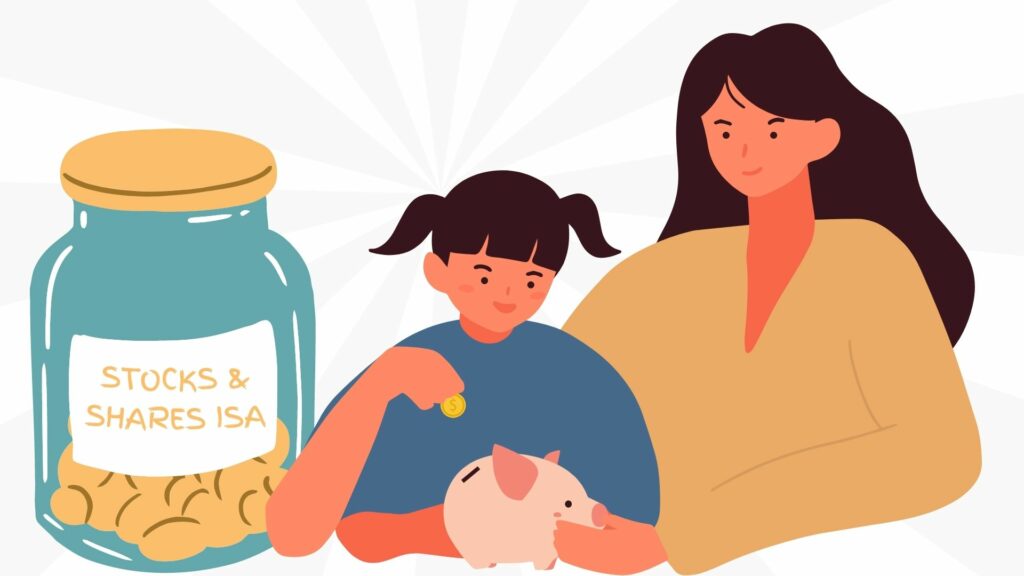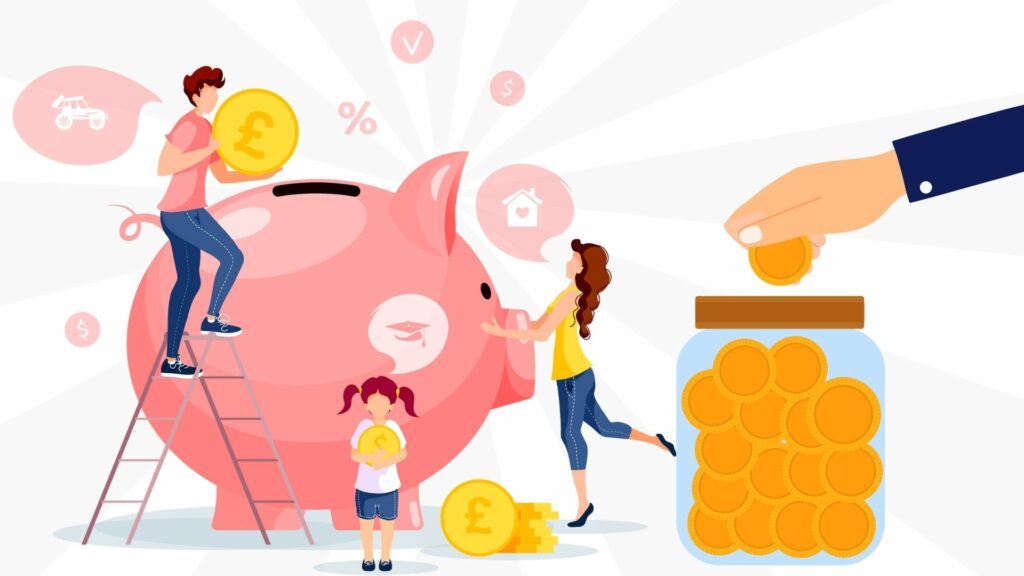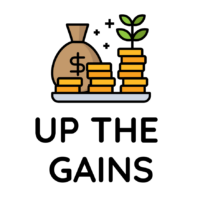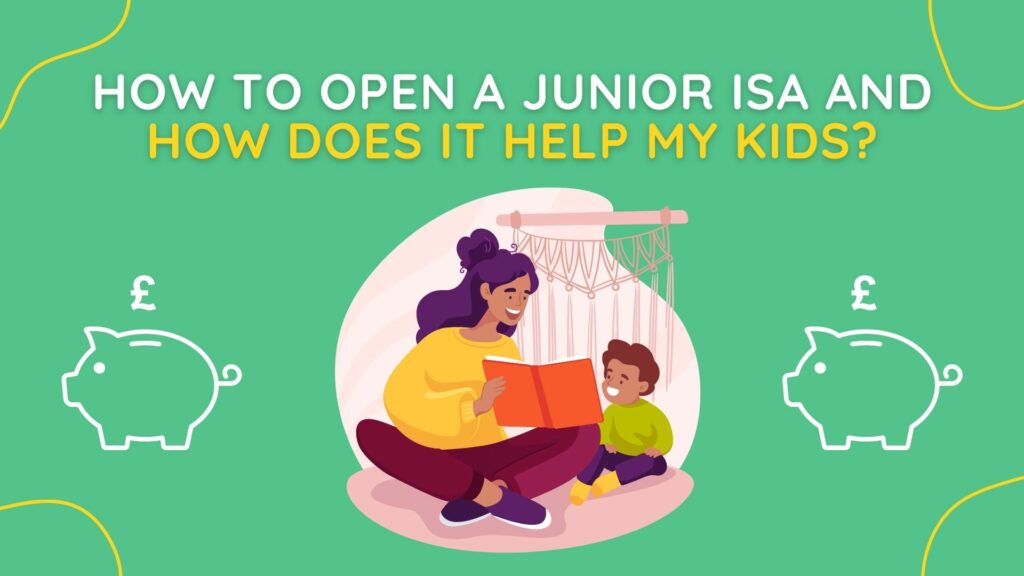
Sammie Ellard-King
I’m Sammie, a money expert and business owner passionate about helping you take control of your wallet. My mission with Up the Gains is to create a safe space to help improve your finances, cut your costs and make you feel good while doing it.
Now the kids have returned to school after an adventure-filled summer, you’ve probably made a brew, had a sit-down and put your feet up for five minutes. However, it’s the perfect opportunity to start looking at how to organise their finances.
When was the last time you had a good look through the cash that is in your child’s name? What is the plan for their financial future?
Opening an isa for a child is a fantastic way to get them a leg up in life.
Even in tough times, it’s good to keep an eye on the horizon and know that your child’s cash is in the right place. It’s because of that you’ve cast your eye to ISAs and most specifically Junior ISAs.
So, let’s have a look at how to open a Junior ISA, the benefits of one, the ISA allowance and how to help your kids with their financial future.
Table of Contents
What is a Junior ISA?
A Junior ISA (Individual Savings Account) is an effective, long-term, tax-free way to save for a child’s future.
This versatile account, available through various providers, is designed with the child’s financial growth in mind.
Open to contributions from anyone – parents, grandparents, aunts, uncles, and family friends – it maintains an annual deposit limit for tax-free growth.
Significantly, Junior ISAs are protected under the Financial Services Compensation Scheme, safeguarding up to £85,000 per person per firm, ensuring the child’s savings remain secure even if the financial institution fails.
Additionally, children with a Child Trust Fund (CTF), particularly those born between 2002 and 2011, can seamlessly transfer their funds to a Junior ISA, consolidating their savings into this modern, flexible savings vehicle.
Who can open a Junior ISA?
A Junior ISA can be opened by a parent or legal guardian for any child under the age of 18 who resides in the UK. Once the account is opened, anyone can contribute to it, but only the parent or legal guardian can set it up in the child’s name.
How to open a Junior ISA?
When looking at how to open a Junior ISA, you need to first look at the different types of junior ISA. Then you can decide which one you want.
Then you can find the provider who has that account that you are happy with. Once you have figured that out, you need to get an application form and fill it in.
You can usually do this online. However, you can also apply at a branch. You’ll need proof of identification for both you and the child you are opening it for.
This is usually a full birth certificate or passport. When you apply online, you will usually have to go through the identification checks digitally.
If you are opening with a lump sum, you’ll need your debit card details. If you want to set up a direct debit for a regular deposit, you’ll need your bank details.

What types of Junior ISA are there?
It’s important to decide which type of junior ISA you want to open. There are two choices to consider.
Cash Junior ISA
This is similar to a basic saving account with the bank. The key difference being you save money for your child’s future tax-free.
Stocks & shares Junior ISA
Also known as an investment junior ISA, a junior stocks & shares ISA invests the money in a range of assets. This can include funds, property, funds and stocks and shares. It grows free of tax.
It is important to remember that your child can have one of each of these junior ISAs. Really though, you just need to ensure that the money put into the accounts stays within the annual savings and investments limits.
Investing into a junior ISA is a great way to grow the money long term and outpace the average rate you will receive from a cash ISA or savings accounts.
Can parents withdraw money from a Junior ISA?
The idea of a junior ISA is long-term. It’s about putting money away for the child’s future.
The parent or guardian with parental responsibility who opens the account can manage it, but the money belongs to the child.
When the child turns 18, they can take control of the account. However, no money can be withdrawn until they are 18 years of age.
You can also transfer a junior ISA to another provider if you’re not happy with your current one. The same rules apply.
What happens when the child becomes 18?
When you look at how to open a Junior ISA, you need to know what happens once that junior ISA matures. When the child becomes 18 and can access the money, the junior ISA automatically moves to become an adult ISA.
There are two options for your child at this time. They can leave the savings in this new adult ISA and continue to add further contributions should they wish.
Or they can access the money. The choice is theirs, but it’s a good idea to have spoken to them about the money before they have this milestone birthday.
Hopefully, you can sit with them and talk about what you had in mind when you put the money aside for them. Perhaps you had a university in mind or for them to keep adding to it to use as a deposit for a house.
Essentially involving your kids so they learn about money showing them the benefits of investing is just a wonderful thing to do for a young child.
Maybe you can even help them decide what to do with it but remember it is their money and their choice.
Are junior ISAs a good idea?
Junior ISAs are a great idea if you want to help them later in life. Putting the money away so it is safe and untouchable until a certain date is great, meaning it cannot be spent.
You can put money away, so your child has a little nest egg when they become an adult.
If you have helped them learn about money and be sensible with their cash, it will be a good pot of cash they can use to further their education, buy a car or find somewhere to live.
However, the fact cannot be touched for such a long time can be difficult. What if you need some money for your child if something was to happen?
If something was to happen and your child needed the cash to make life comfortable, waiting ten years or more to access it might not be an option.
Opening a Junior ISA account is a great idea for those looking long-term for their children. However, you could also consider putting money into a savings account that can be accessed should you need it.
What is the maximum you can pay into a junior ISA?
The huge benefit of a junior ISA being tax-free means there is a limit to the amount of money you can deposit every financial year. For the 2023/24 tax year, this is £9000.
This is across all ISA accounts. So, if you opened both a junior cash ISA and a junior stocks and shares ISA, you would have to ensure that you don’t go over the £9k limit depositing into the two of them.
How much interest can the money in a junior ISA make?
Depending on the type of junior ISA you open will change how much interest can be made.
The best rate at the time of writing this for a cash Junior ISA is 4%. This means if you invested £1,000 you’d have £1,040 at the end of the first year.
If you then contributed £1,000 a year until they were 18 they’d have a total of £27,872 earning £8,872 in interest.
Stocks and shares junior ISAs are different. Because the money is invested in different areas, you aren’t 100% sure how your money will grow.
However, due to the long-term idea of junior stocks and shares ISAs, they have got the potential to deliver greater growth. It’s worth looking at how different providers have performed over the last few years.
Many of them are award-winning. Of course, investments can go up and down, so you might not make as much as you think.

Junior ISA alternatives
There are some children’s savings accounts that offer a higher interest rate, but usually on smaller amounts of cash. For example, you can get 3.25% on up to £3000.
It might only be for a certain duration too. If you use this example for five years, the lump sum of £3k would be worth £3520.23 after five years.
Easy access accounts are great if you think you’ll need the money. However, you might be able to get higher interest rates if you are willing to lock the money away for a number of years.
Be sure you put any money away for your children’s future somewhere safe. It is better in a bank account. This is where it can grow and earn interest, rather than in a piggy bank gaining nothing.
Setting up your children for the future
We want to be the best possible role models and establish habits that will help them become the best possible version of themselves.
How are they watching you deal with your finances? A lot of what children do is by copying what their nearest and dearest do.
If you are looking after your finances and your children are seeing that, this is likely something that they will develop too.
No one is perfect, we all have highs and lows, making mistakes here and there. But if you can be the role model they need, it will certainly help them in the future.
Many of us want to put things in place now so our children will have financial help when they come of age. However, giving them a huge wedge of cash without any knowledge is an error.
Squirrelling away some savings for their future is wonderful, but we must help our children understand money so they respect it and can use it wisely. This is where financial education can come in.
Helping your child with financial education
Making decisions around money is important to establish from an early age. Knowing when to spend, where to save, and how to have a handle on our finances can stay with us throughout life if it is learned early on.
We might start with spending pocket money on sweets. However, life moves fast. Suddenly our kids are clothes shopping, paying for driving lessons, and looking at train travel for college.
Fortunately for today’s kids, there is so much content out there to digest. From traditional books to YouTube channels and apps like GoHenry, children and teenagers can learn about and develop a financial education.
This will help them have a solid foundation on which to build when they are adults. This will help when they come to look at university tuition, paying for a wedding and managing a mortgage.
There isn’t enough financial education in school. So, if you can sit with your children and help them understand their money, they will develop the knowledge needed to figure out financial life events.
You can also get them saving early into their own junior ISA. Doing odd jobs to make money in the neighbourhood is fantastic way to get your kids started.
Conclusion
Are junior ISAs worth it? In short, the answer is yes. If you want to provide some financial future for your children and put cash away now, which can gain interest and grow, it is a great idea.
You need to remember that any money you put away won’t be withdrawable for a number of years. So having a separate accessible account might be an idea.
FCSC protection will help put our minds at rest that the money we put aside for our children is safe. If you want to save a little something for your children, it is worth looking at how to open a Junior ISA and add cash to that account today.
Share this article with friends
Disclaimer: Content on this page is for informational purposes and does not constitute financial advice. Always do your own research before making a financially related decision.


